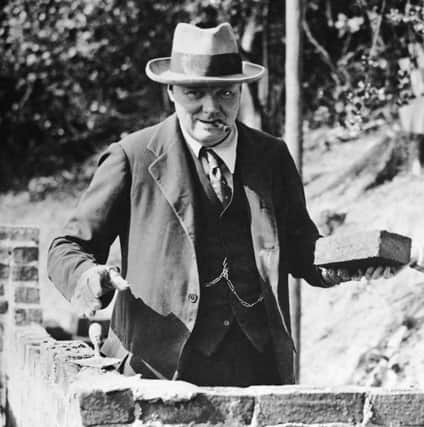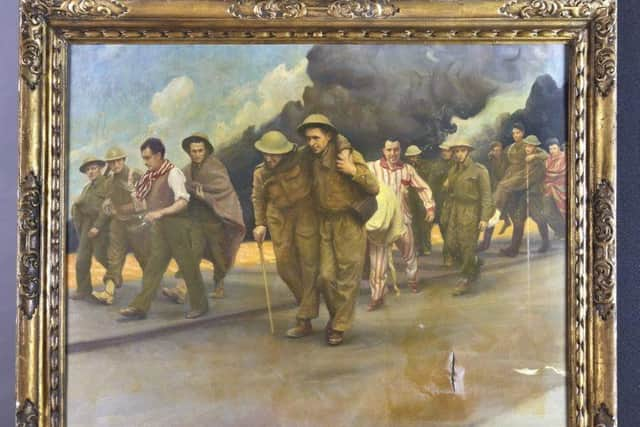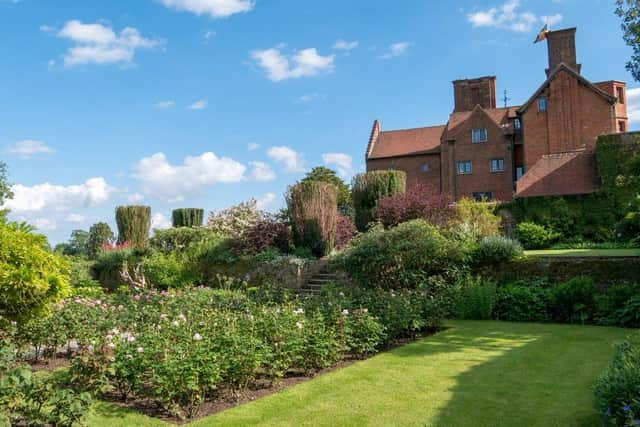Chartwell: Where you get to know the man who is behind the myth


And yet this man also became the world’s most famous politician and statesman who saved the UK in the Second World War. Winston Spencer Churchill’s full range of achievements are highlighted at his intimate family home of the National Trust owned Chartwell, an 82-acre estate in Kent with stunning views of the Weald, which he bought with his wife Clemy in 1922 and where he spent most of his life outside of war years.
The Trust has for the first time put on public display at Chartwell the painting Dunkirk, made by the wartime artist Ernest Townsend in 1941 a year after Britain’s infamous retreat from the continent, which it has spent nearly 100 hours restoring.
Advertisement
Hide AdAdvertisement
Hide AdTownsend’s son gifted this painting of some of the 300,000 soldiers being evacuated to Churchill who was ‘honoured to accept’ in 1947. Chartwell is a captivating home that offers a glimpse into Churchill’s different phases as writer and orator, family man, politician, soldier and military leader and artist - especially during his wilderness years from 1929 to '39 when his career appeared finished.


His achievements are all the more impressive given his unhappy childhood which he overcame with unwavering self-belief and sense of destiny. His want for nothing as a child born into splendour in November 1874 wasn’t compensation for his cold and aloof parents Lord and Lady Randolph Churchill.
Randolph was an overly ambitious politician in the Conservative party who misjudged his push for power and ended up a study in failure, dying a terrible death most likely from syphilis at 45, leaving the family perpetually short of money, a situation exacerbated by spending habits of his American wife, thrice married heiress Jennie Jerome, who took to affairs with younger men.
And Churchill himself was not a conventionally bright child despite having all the advantages of a private tutor and attending Harrow, subjects like Latin and maths remaining everlasting mysteries for him. He was not material for university and was exceptionally lucky to gain entry to the army’s Royal Military College at Sandhurst, having failed the entrance exam twice and scraped through on the third and final attempt allowed, probably thanks to generous marking. India began his education when posted there in 1896 with 4th Queen’s Own Hussars, where he started a "university of one" intensely studying history and literature he had missed out on.
Advertisement
Hide AdAdvertisement
Hide AdAnd, as extensively as he studied, he also played polo as an accomplished horseman. Few people know that when disembarking from a boat to shore in Bombay harbour, Churchill reached for a post and wrenched his shoulder which became a source of pain for the rest of his life.


He nonetheless continued playing polo through the pain, helping his regiment win a tournament in Hyderabad by scoring two goals despite having his right elbow strapped to his body with a leather harness!
He saw service on the north west frontier a year later and could easily have lost his life in skirmishes in the mountains with Pashtuns, the forerunner of the modern Taliban, who were overcoming fellow officers around him.
In 1898 he was in the last cavalry charge by a British regiment as part of General Kitchener’s assault on the Sudanese forces of the Mahdi, which thirteen years earlier had stormed the capital, Khartoum, beheading major-general Charles Gordon.
Advertisement
Hide AdAdvertisement
Hide AdChurchill was at the forefront of action, storming the line with the 21st Lancers, his injured arm inhibiting use of a cavalry sword so he resorted to a trusted Mauser self-loading pistol!
His experiences led him to write “Nothing in life is so exhilarating as to be shot at without result”.
Afterwards, he could easily have been picked off by Dutch and German Boers sharpshooters during the Boer War in Southern Africa, which he participated in as a war correspondent for the Morning Post, at this time best paid reporter of any in England.
Despite being a civilian, he organised the escape of some soldiers in a derailed train (a man next to him had part of his arm blown off) in 1899. Then, making a dash for it himself, he was approached by a lone Boar horseman aiming a rifle. Churchill reached for his Mauser, only to find he’d dropped it in the action.
Advertisement
Hide AdAdvertisement
Hide AdFortunately, the Boer spared his life and took him prisoner instead. Louis Botha later became first prime minister of Transvaal State, now part of South Africa, and a friend to Churchill and Britain during the First World War.
Captivity couldn’t hold Churchill. He made a daring escape, leaving behind a cheeky letter thanking the Boer secretary for war for his hospitality and apologising for not being there to say thank you in person!
The result of a kill or capture bounty on his head was averted when, by good luck, he came across an Englishman John Howard, a manager of one of the Transvaal Collieries, who hid him and helped arrange his travel hundreds of miles by train unnoticed to eventually receive a hero’s welcome in Britain.
The lauded journalist, escapee and soldier went on to become first a Conservative MP, then a Liberal one, taking up various ministerial appointments including his first cabinet appointment as President of the Board of Trade in 1908, aged only 33.
Advertisement
Hide AdAdvertisement
Hide AdBy this time, he’d already produced eight books, that year marrying Clementine Hozier, later fathering four children – Diana in 1909, Randolph two years later, Sarah in 1914 and Mary in 1922 (a fifth, Marigold, died in infancy).
In 1910 he became Home Secretary, youngest ever until the 1980s, then First Lord of the Admiralty for the early part of the First World War, before seeing active service with the Grenadier Guards, then returning to government service, most prominently as Chancellor of the Exchequer from 1924 to '29. He reluctantly left his home in October 1964 when poorly, dying the following year in London. Lady Churchill decided to leave Chartwell in June 1965.
All aspects of Churchill’s astounding life are displayed at Chartwell including his paintings, gardens and the lake he designed as well as Dunkirk. Details can be found at www.nationaltrust.org.uk/chartwell.